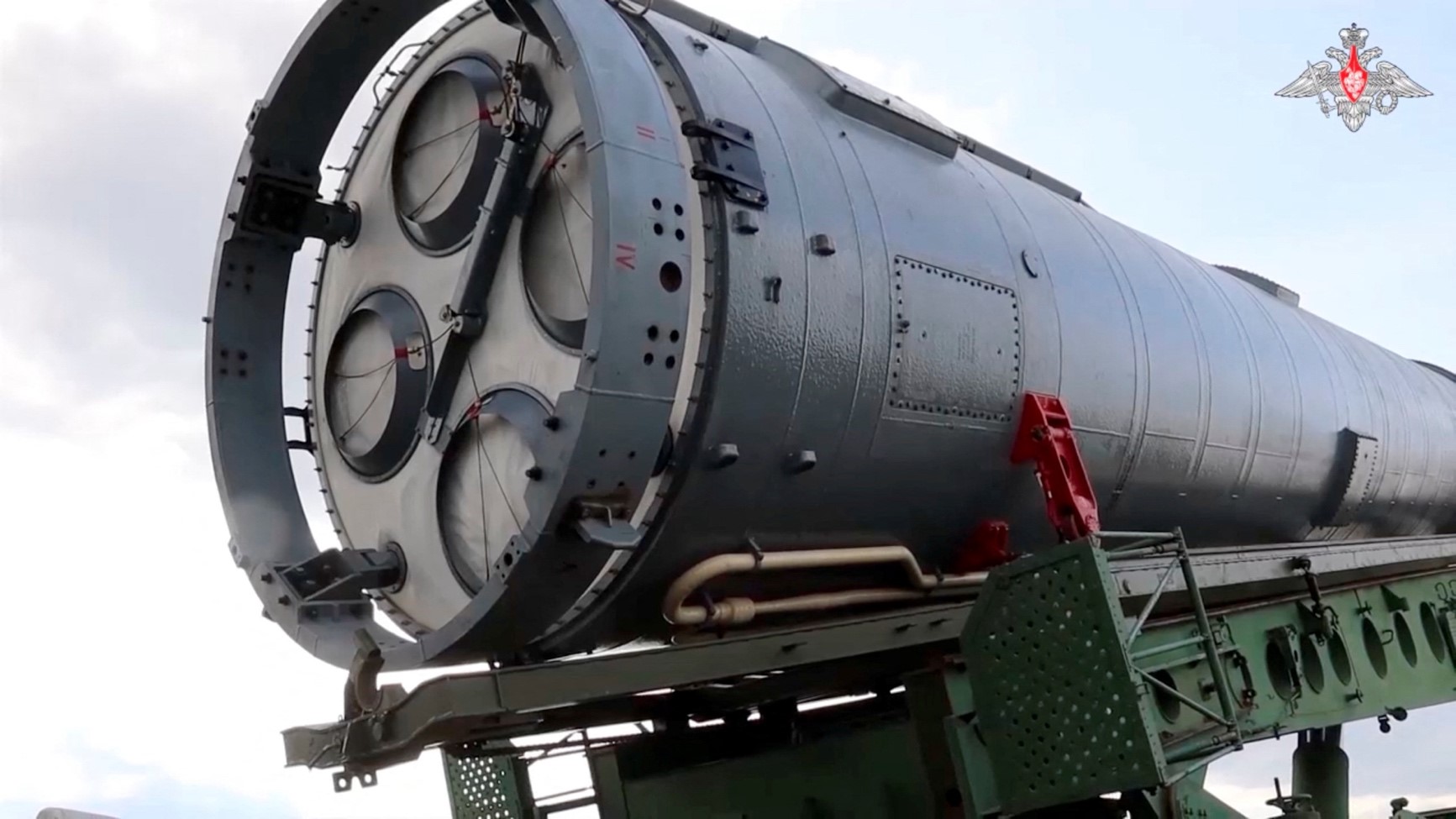Description

Disclaimer: Copyright infringement not intended.
Context
Russia's rocket forces loaded an intercontinental ballistic missile equipped with the nuclear-capable "Avangard" hypersonic glide vehicle into a launch silo in southern Russia.
Details
- The Avangard is a hypersonic glide vehicle designed to be carried atop an intercontinental ballistic missile (ICBM).
Features
- Warhead Design: The Avangard is equipped with a nuclear warhead and is capable of carrying a large payload.
- Boost-Glide Technology: It employs boost-glide technology, utilizing a ballistic missile for initial launch and then gliding at high speeds within the Earth's atmosphere.
- Improved Precision and Speed: Its exceptional speed and maneuverability enhance its precision and make it extremely challenging for existing missile defense systems to intercept.
Avangard's Significance and Capabilities
- Response to U.S. Development: President Vladimir Putin unveiled the Avangard hypersonic glide vehicle in 2018, positioning it as a response to the U.S.'s development of advanced weapons systems and missile defense technologies deemed penetrable by the Avangard.
- Exceptional Speed and Maneuverability: The Avangard, detached from the rocket upon nearing its target, maneuvers sharply at hypersonic speeds, reaching up to 27 times the speed of sound (around 21,000 mph or 34,000 km/h).
.jpg)
International Context
- Evolving Arms Race: Both Russia and the United States, prominent nuclear powers, express concern over the deteriorating arms-control treaties. Simultaneously, they are actively developing a new range of weapons systems, including hypersonic technology.
- Geopolitical Tensions: The U.S. identifies China as a primary competitor and considers Russia as a significant threat among nation-states. President Joe Biden emphasizes a defining contest between democracies and autocracies in this century, shaping global power dynamics.
Russia's Perspective
- Russia's Assertion: Russia contends that the U.S.'s post-Cold War dominance is diminishing, citing American policies that, according to Russia, have led to global turmoil while overlooking the interests of other major powers.
Introduction to HGVs
- Hypersonic Glide Vehicles (HGVs) are next-generation military systems designed for high-speed maneuverability, precision strikes, and evading existing missile defense systems.
Features and Working Principle:
- Exceptional Speed: HGVs travel at hypersonic velocities, typically exceeding Mach 5 (five times the speed of sound) and can reach speeds up to Mach 20 or beyond.
- Glide and Maneuver: Unlike traditional ballistic missiles, HGVs glide within the Earth's atmosphere after separation from the rocket, allowing for unpredictable and evasive flight paths.
Development and Deployment:
- Global Development: Major military powers such as the United States, Russia, China, and others are actively investing in the research and development of hypersonic technology.
- Variations in Design: There are different types of HGVs, each employing unique technologies to achieve hypersonic speeds and maneuverability.
Strategic Significance:
- Enhanced Precision and Range: HGVs offer improved accuracy and extended range for delivering warheads or payloads, making them a formidable addition to conventional missile systems.
- Challenges to Defense Systems: Their high speeds and erratic flight patterns pose significant challenges to existing missile defense systems, making interception extremely difficult.
Applications and Use Cases:
- Military Applications: HGVs can be equipped with conventional or nuclear warheads, enhancing the military's strike capabilities against both ground and naval targets.
- Prompt Global Strike: The concept of delivering rapid, precise, and long-range strikes anywhere in the world within minutes is a significant application of HGVs.
Arms Race and International Concerns:
- Arms Race Dynamics: The development and deployment of hypersonic technology have led to concerns about a new arms race among major global powers.
- Strategic Stability: These advancements in military technology have raised concerns about strategic stability and the potential for increased global tensions.
.jpg)

Conclusion
The loading of the Avangard-equipped missile signals Russia's commitment to enhancing its strategic capabilities, engaging in the ongoing geopolitical competition characterized by the development of sophisticated weaponry and the contest for global influence among major powers.
|
PRACTICE QUESTION
Q. Discuss the strategic significance and challenges posed by Hypersonic Glide Vehicles (HGVs) in modern warfare. How do advancements in this technology impact global security dynamics? (250 Words)
|










